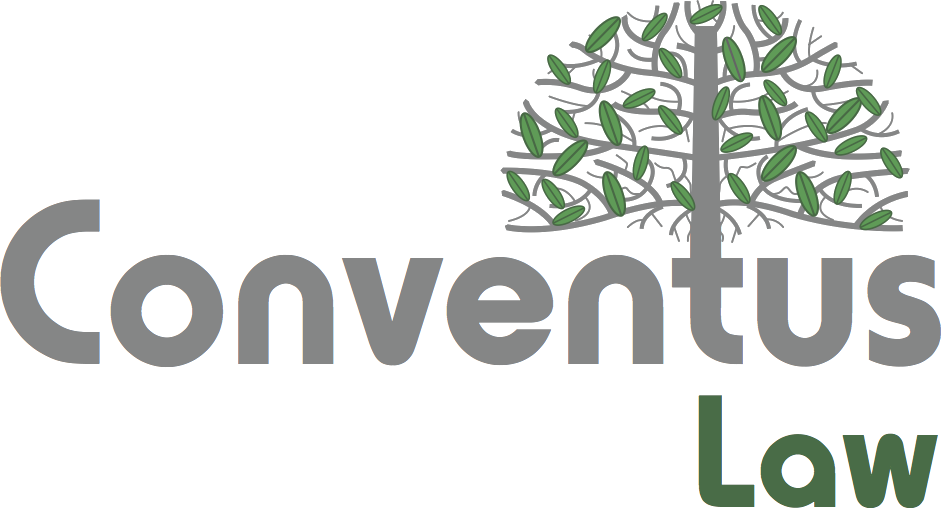“The blog analyses the amendments made to the Securities and Exchange Board of India (Share Based Employee Benefits and Sweat Equity) Regulations, 2021 in relation to (i) the regulatory developments around allowing the top brass of India Inc’s new age technology companies to retain their ESOPs upon being classified as ‘promoters’ during the IPO process and (ii) the amendments undertaken to the Securities and Exchange Board of India (Issue of Capital and Disclosure Requirements) Regulations, 2018 earlier this year.”
The rise of India Inc’s New Age Technology Companies (“NATC”) marks a transition from traditional “founder-owned businesses” to a “venture backed start-up market”, where the founders must often bear the “cost” of acquisition of institutional capital via a dilution of their shareholding. As these founders continue to helm operations and business activities after incurring such dilution(s), companies often explore grant of incentive units, including employee stock options (“ESOP”) and stock appreciation rights (“SAR”), to keep the founders invested in the growth story of the company, with founder incentives benefiting from valuation upsides seen as a key takeaway.[1]
The recent development in the venture-backed start-up market has also seen a trend where NATCs are increasingly required to provide exit opportunities to their institutional investors through Initial Public Offerings (“IPO”).[2] However, at the time of undertaking an IPO, the founders of these companies are often categorised as “promoters” or “members of the promoter group”, which makes them ineligible to receive ESOPs under the current regulatory framework.
In a move to remain aligned with these evolving market realities, the Securites and Exchange Board of India (“SEBI”) notified the Securities and Exchange Board of India (Share Based Employee Benefits and Sweat Equity) (Amendment) Regulations, 2025[3] (“SBEB 2025”), on September 8, 2025, attempting to clarify the validity of ESOPs, SARs, and other benefits provided to “founders” who are subsequently classified as “promoters” / “members of the promoter group”.
In this post, we analyse SEBI’s attempt to refine its regulatory approach with founder incentives. It also continues our series[4],[5] on IPO eligibility, focusing on how SBEB 2025 when read together with SEBI’s recent amendments to Regulation 5(2) of the Securities and Exchange Board of India (Issue of Capital and Disclosure Requirements) Regulations, 2018 (“ICDR”) would continue to impact companies with outstanding rights or convertible instruments.
Regulatory Development: Playing Catch-Up
“Promoters” are ineligible to receive ESOPs in both the listed and unlisted spaces, as regulators view these individuals as occupying the “driving seat” of a company by virtue of their controlling stakes or management rights. They perceive a concentration of economic incentives (in this case, ESOPs) and governance rights within the “driving seat” of the company as not aligned with public shareholder interests.
This regulatory view can be traced back to the JR Varma Committee Report on Employee Stock Options (1999),[6] where the expert committee expressed concern, “that large option grants to a handful of employees could be abused by unscrupulous managements”. This was substantiated by the JR Varma Committee Report on Sweat Equity, ESOP, and Preferential Allotment (2003),[7] which stated that “there was greater justification for granting stock options to promoters at the unlisted stage than after listing, the Committee nevertheless recommends that they be excluded even for unlisted companies. The principal rationale for this recommendation is that promoters have the avenues of sweat equity and preferential allotment available to them and it is not necessary to allow stock options also as an additional route”.
However, vide the recommendations of another expert committee, specifically the Companies Law Committee Report, 2016,[8] this rule was further deliberated “in order to encourage start-ups, this rule may be relaxed to enable issuance of ESOPs to promoters who may be working as employees or employee directors or whole time directors which would help the promoters to gain from increase in future valuation of the company without in any way impacting finances of the company during its initial years”.
Pursuant to this, the law governing the blanket ban on ESOPs to “promoters” was evolved in terms of the amendment to the Companies (Share Capital and Debenture) Rules, 2014 (“SCDR”) (applicable to unlisted entities), via an amendment,[9] whereby unlisted companies classified as “startup companies” are exempt from the restrictions for certain period (10 years currently, from the date of incorporation or registration of company). This amendment was introduced to ensure regulatory frameworks remain aligned with the contemporary venture-backed environment.
Therefore, SBEB 2025, in an attempt to catch up with the evolving market realities, has inserted the following clause after the current Clause 9 of the Securities and Exchange Board of India (Share Based Employee Benefits and Sweat Equity) Regulations 2021 (“SBEB 2021”):
“9A. Employee identified as promoter or part of the promoter group in the draft offer document.
An employee who is identified as a ‘promoter’ or part of the ‘promoter group’ in the draft offer document filed by a company with the Board in relation to an initial public offering, and who was granted options, SAR or any other benefit under any scheme at least one year prior to filing of the draft offer document, shall be eligible to continue to hold and/or exercise such options, SAR or any other benefit, in accordance with its terms and subject to compliance with these regulations and other applicable laws.”
According to SEBI’s consultation paper,[10] which was the precursor to SBEB 2025, “Currently, SBEB Regulations neither specifically allow nor disallow exercise of granted ESOPs (both vested and unvested) when Employee holding such ESOPs is subsequently categorized as Promoter. Based on the representations received, it is proposed that an explanation may be added to state that share-based benefits granted to founders would continue upon such founder being classified as promoter in the DRHP.”
The current regulations, therefore, reveal inconsistencies. While the broader framework of the SCDR and SBEB 2021 prohibit ESOPs for “promoters”, carve-outs like the start-up exemption in the unlisted space and SBEB 2025 in the listed space have blurred the lines. The amendment also raises a critical question on whether founders, once designated as “promoters”, should be entirely excluded from participation in incentive schemes upon assuming fiduciary responsibilities post-listing.
Procedural Roadblock: ICDR Read with SBEB 2025
A collective reading of Regulation 9A, inserted via SBEB 2025 and Regulation 5(2) of the ICDR, reveals a further inconsistency. Regulation 9A permits an employee, subsequently identified as a “promoter” or “as a member of the promoter group” in the draft offer document to continue holding and exercising ESOPs, SARs, or similar benefits, provided these were granted at least one year prior to the filing of the draft offer document. Thus, the objective of SBEB 2025 is to ensure continuity of incentive units offered to founders who are categorised as “promoters” after the IPO process. However, Regulation 5(2) of the ICDR provides that an ESOP scheme framed by a company prior to its IPO can survive IPO and continue to have unallocated / unvested ESOPs. However, in terms of SARs, the amendments to Regulation 5(2) of the ICDR earlier this year provide that all outstanding SARs be fully exercised and converted into equity shares prior to the filing of the red herring prospectus (“RHP”) by the company, in connection with its IPO. This places an obligation on companies with SAR schemes considering IPO to grant all units and have them exercised on or before filing the RHP or alternatively, wind up the SAR scheme prior to filing the RHP.
As a result, the requirement under the amended ICDR Regulations to exercise or settle all SARs prior to the RHP filing effectively extends to SARs held by founders who are later classified as “promoters” or “members of the promoter group”. This is in direct conflict with SBEB 2025, which attempts to allow for such SARs to remain valid and exercisable, if these units have been granted at least one year before the filing of the draft offer document. In practice, this inconsistency would nullify the intended relief provided by SBEB 2025 in terms of SARs.
To resolve these regulatory inconsistencies, a more comprehensive approach is needed. Regulators must decide whether to uniformly permit or prohibit ESOPs for “promoters”, without fragmented exceptions. In doing so, they can draw corollary from international best practices, which typically allow ESOPs issued to founders to remain valid post-listing, provided they are transparently disclosed to shareholders. Moreover, the inconsistency between Regulation 5(2) of the ICDR and SBEB 2025 adds additional complexity to the IPO process for NATCs, potentially hampering efficient capital market access.

For further information, please contact:
Bharath Reddy, Partner, Cyril Amarchand Mangaldas
bharath.reddy@cyrilshroff.com
[1] SEBI’s ESOP rules for promoters need a rethink (accessible at, https://www.moneycontrol.com/news/opinion/sebi-s-esop-rules-for-promoters-need-a-rethink-13048126.html)
[2] ‘India’s Start-Up Boom: IPOs Overtake M&As as the Top Exit Strategy’ (accessible at, https://www.outlookbusiness.com/start-up/news/indias-start-up-boom-ipos-overtake-mas-as-the-top-exit-strategy)
[3] Securities and Exchange Board of India (Share Based Employee Benefits and Sweat Equity) (Amendment) Regulations, 2025 (accessible at, https://egazette.gov.in/WriteReadData/2025/266007.pdf)
[4] Proposal to make Companies with Outstanding Stock Appreciation Rights (SARs) eligible to undertake an IPO (accessible at, https://corporate.cyrilamarchandblogs.com/2024/09/proposal-to-make-companies-with-outstanding-stock-appreciation-rights-sars-eligible-to-undertake-an-ipo/)
[5] Amendment to make companies with outstanding Stock Appreciation Rights IPO eligible: A few steps closer, but not there yet (accessible at, https://corporate.cyrilamarchandblogs.com/2025/04/amendment-to-make-companies-with-outstanding-stock-appreciation-rights-ipo-eligible-a-few-steps-closer-but-not-there-yet/)
[6] J.R Varma Committee, Report on Employee Stock Options (1999). (accessible at: https://dur682txgv28e.cloudfront.net/pointers/d03963c2-ba0d-4e0d-b934-04aca2e548e3/pdf_doc/22ebbe63-b26d-4e97-906d-e595e06674bd_DCR10032.pdf)
[7] J.R Varma Committee, Report on Sweat Equity, ESOP and Preferential Allotment (2003). (accessible at: https://www.jrvarma.in/reports/Sweat_ESOP_Pref_Allot_report_DCA.htm)
[8] Report of the Companies Law Committee (2016) (accessible at: https://prsindia.org/files/bills_acts/bills_parliament/2016/Report_of_the_Companies_Law_Committee_3.pdf)
[9] Companies (Share Capital and Debentures) Third Amendment Rules, 2016 (accessible at https://www.mca.gov.in/Ministry/pdf/Rules_19072016.pdf/)
[10] Consultation Paper on certain Amendments to SEBI (ICDR) Regulations, 2018 and SEBI (SBEB & SE) Regulations, 2021 (accessible at, https://www.sebi.gov.in/reports-and-statistics/reports/mar-2025/consultation-paper-on-certain-amendments-to-sebi-icdr-regulations-2018-icdr-regulations-and-sebi-sbeb-and-se-regulations-2021-sbeb-regulations-_92773.html)





